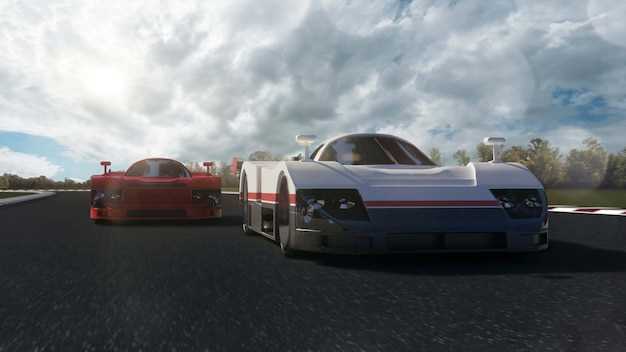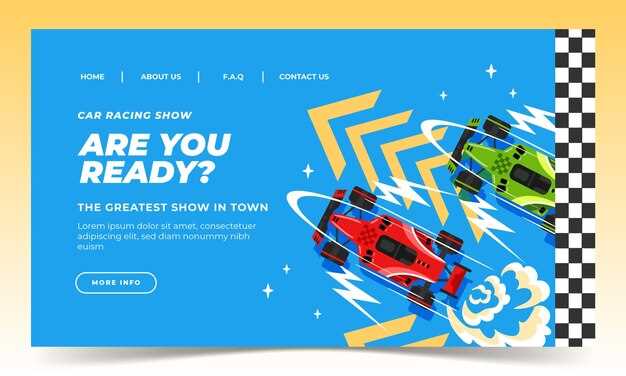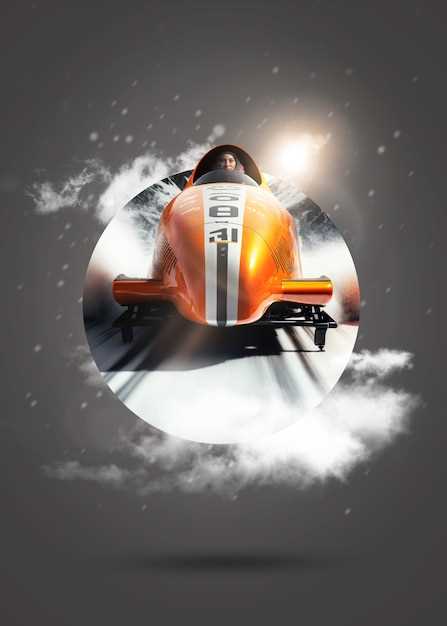
In recent years, the intersection of social media and drag racing communities has become increasingly significant. Social platforms have changed the way enthusiasts interact, share information, and promote events. This evolution has not only brought a new level of visibility to the sport but has also fostered a sense of community among fans and participants alike. The instantaneous nature of media allows for real-time updates, sharing of race highlights, and engagement with a global audience, thus revitalizing the traditional aspects of drag racing.
Drag racing, a sport rooted in speed and competition, thrives on the camaraderie and rivalry it generates among racers. Social media has amplified this effect by providing a space for drivers to showcase their vehicles, share personal achievements, and connect with like-minded individuals. Platforms like Instagram, Facebook, and TikTok have become essential tools for teams to cultivate their brand, attract sponsorship, and build a loyal following. As a result, the dynamics of drag racing are continually evolving, influenced by the trends and interactions fostered through social channels.
Furthermore, the impact of social media extends beyond the digital engagement of racers; it also enhances the spectator experience. Fans can easily access content from events around the world, watch live broadcasts, and participate in discussions and polls. This accessibility has transformed how audiences perceive the sport, encouraging greater participation both online and at race tracks. Thus, the importance of the media landscape in shaping the future of drag racing cannot be overstated as it continues to redefine relationships within this vibrant community.
How Social Media Platforms Shape Drag Racing Events and Participation

Social media platforms have dramatically transformed the landscape of drag racing events and participation. By providing a space for enthusiasts to connect, share, and promote, these platforms facilitate a vibrant community that extends beyond geographical boundaries.
One significant way social media influences drag racing is through the promotion of events. Organizers utilize platforms like Facebook, Instagram, and Twitter to announce races, share details, and engage with potential spectators and participants. This digital outreach not only boosts attendance but also enhances the visibility of smaller, local events that might otherwise be overlooked.
Additionally, social media allows racers to showcase their skills and vehicles, create personal brands, and connect with sponsors. Platforms like YouTube and TikTok enable racers to post videos of their runs, engage in live streaming, and document their journeys, attracting followers who share a passion for racing. This visibility can lead to increased sponsorship opportunities, as brands seek to affiliate with popular figures in the racing community.
Community engagement is further enhanced through platforms where users can share tips, tricks, and experiences. Forums on social media allow participants to ask questions, seek advice on vehicle modifications, and discuss best practices, fostering a sense of camaraderie and collective growth in the sport.
Moreover, social media encourages grassroots participation by making it easy for new fans and racers to enter the scene. Through targeted advertisements and community posts, potential participants can find races, local clubs, and mentorship opportunities that facilitate their entry into the world of drag racing.
In conclusion, social media platforms play an essential role in shaping drag racing events and participation. They enhance promotion, facilitate community building, and open up opportunities for new entrants, thereby contributing to the growth and dynamism of the drag racing scene.
The Role of Online Communities in Building Connections Among Drag Racers
Online communities play a pivotal role in fostering connections among drag racers. Through social media platforms, individuals with a shared passion for drag racing can come together, creating a vibrant network that transcends geographical boundaries. These platforms enable users to exchange ideas, share experiences, and showcase their vehicles, fostering a sense of belonging within the drag racing community.
Social media serves as a powerful tool for racers to connect with one another. Forums, Facebook groups, and Instagram pages dedicated to drag racing allow enthusiasts to communicate directly. This interaction builds relationships based on mutual interests and shared knowledge, enhancing the overall experience of being part of the drag racing culture.
Moreover, online communities facilitate the sharing of valuable resources, such as tips on vehicle modifications, techniques for improving racing times, and updates on upcoming events. These exchanges not only empower individual racers but also contribute to the collective knowledge of the community, ultimately elevating the sport as a whole.
Additionally, social media acts as a platform for collaboration, where racers can team up for events or projects, such as building custom cars or participating in charity races. These collaborations enrich the community and strengthen bonds among participants, creating lasting friendships that extend beyond the race track.
In conclusion, the role of online communities in building connections among drag racers is significant. By leveraging social media, racers can forge valuable relationships, share insights, and participate in collaborative endeavors, all of which enhance their passion for drag racing. This digital landscape not only unites individuals but also propels the sport into new realms of popularity and engagement.
Analyzing the Influence of Social Media on Sponsorship and Marketing Strategies in Drag Racing

Social media has fundamentally transformed the landscape of sponsorship and marketing within the drag racing community. Traditionally, sponsorships were primarily driven by direct relationships between teams and companies, often limited to presence at events and traditional advertising. However, the rise of platforms such as Instagram, Facebook, and TikTok has allowed drag racing teams to engage with fans on a more personal level, creating a dynamic and interactive environment.
With the ability to reach vast audiences, drag racing teams can now showcase their vehicles, share behind-the-scenes content, and highlight their sponsors in innovative ways. This shift allows sponsors to gain visibility not only at events but also through digital interactions. By leveraging social media, teams can develop targeted marketing strategies that resonate with specific demographics, enhancing the effectiveness of their sponsorship deals.
Moreover, the data analytics provided by social media platforms enables teams and sponsors to assess the impact of their marketing efforts. Metrics such as engagement rates, reach, and conversions allow for real-time adjustments in strategy, ensuring optimal results. This data-driven approach has paved the way for more strategic partnerships, as sponsors can now justify their investment with measurable outcomes.
As fan engagement grows through social media, companies are increasingly aware of the potential to establish brand loyalty within the drag racing community. Effective storytelling and authentic interactions on these platforms can foster a strong sense of connection between fans and brands, translating into increased support for both the teams and their sponsors.
Ultimately, social media has redefined how sponsorship and marketing strategies are developed in drag racing. By embracing this digital revolution, teams not only enhance their visibility but also create rich opportunities for collaboration with sponsors, driving the growth of the entire drag racing ecosystem.



